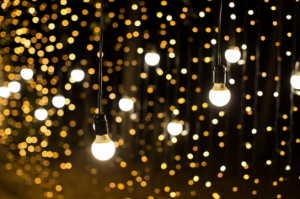You may be astounded to learn just how significant the right lighting is for structures. Have you heard of architectural lighting? It’s a blend of various fields including electrical engineering, interior planning and design. While it isn’t important to be a specialist in any of these fields with regards to picking your ideal lighting, it is an intriguing subject to get some insight into.

Engineering the right lighting configuration is important to serve the needs of the people who will using a specific space. It involves understanding the sort of actions that will happen in the space, how much light is required and how the shade of that light will influence the space. It likewise looks at how that light will be dispersed and its effect on the client. The ideal final product is light that is environmentally friendly, empowers the individual to see clearly and causes no detrimental effects.
One of the significant aspects of structural lighting configuration is how the lighting will influence the style of a structure. This is of specific significance in open spaces, for example, shops, eateries, and workplaces. Ergonomics must be considered, as does the economy of the lighting. Just like the lighting aspects of this other businesses also follow a similar concept like Bristol Garage Door Company Up and Over Doors who work with space and the dimensions of it to understand which type of Garage door they should put in. A lighting specialist will look at each of these from top to bottom. Bespoke lighting planners for private homes will likewise need to figure out the space they are designing for, to guarantee they are not over-lightening and to ensure the best ergonomic fit for the space.

A lighting designer will need to create a highlight that is both appealing and understand whether it is to stand out as a statement piece or whether it needs to unpretentiously blend in with the existing stylistic layout or lighting. Other visual considerations include what sort of environment the lighting will create and what feelings does it inspire. Ergonomically, the physical effect on the client and the space around it will be considered.
There are numerous ways to use light: in spaces where there isn’t any, for making a space look bigger, improving security and to imaginatively set a state of mind. There are likewise a wide range of lighting types available. For instance, outside floodlighting will have different requirements to that which is found inside a library. The perfect lighting conditions for your dining table won’t be the same as what you need for your staircase, for example. Whatever your needs and requirements, you can turn your ideas into a reality with bespoke lighting choices.
For huge scale modern lighting, designers must think about the entire scope of lighting impacts. The position and height of mounted lights, photometric attributes, consistency and quantity being just a few. Imagine an open floor plan that requires various degrees of lighting at different locations and concentration levels. Architects are frequently supported by lighting professionals for big and progressively complex ventures. Data can be entered into computer programmes, for example, to calculate where the lights should be positioned, the amount they reflect off contradicting dividers, the stature of roofs and the amount of separation from floors. Further information can incorporate the effect on any close bay windows too.

